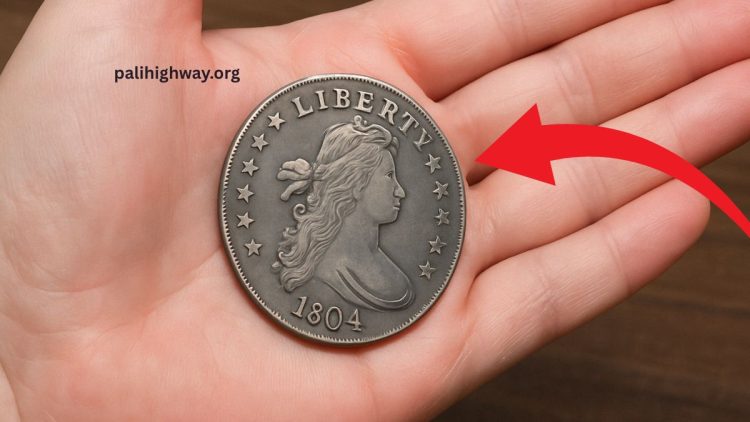It sounds like something out of a treasure hunt, but it’s very real: there are rare coins still out there worth up to $70 million.
These coins, often tucked away in private collections, coin jars, or handed down from generations, could be sitting in your home without you even knowing their true value.
Whether you’re an experienced collector or just starting to explore the world of numismatics, understanding which coins are valuable can make all the difference.
In this guide, we’ll take you through the most valuable coins, how to identify them, and why some of them are worth millions.
Why Are Some Coins Worth Millions?
Rare coins don’t just have high values for their age or design—they become valuable for several key reasons:
| Factor | Impact on Coin Value |
|---|---|
| Limited Mintage | Fewer coins mean higher demand and rarity. |
| Minting Errors | Mistakes like double dies or off-centers create uniqueness. |
| Historical Significance | Coins from major historical events or periods are highly collectible. |
| Condition (Grade) | Coins in better condition (like MS-65 or higher) increase in value. |
| Metal Content | Coins made of precious metals like gold or silver have intrinsic worth. |
The rarer the coin, the more valuable it becomes. Here’s a look at some of the most valuable coins that could still be out there.
Most Valuable Coins Still in Circulation
These rare coins have sold for millions of dollars and could still be found in everyday circulation:
- 1913 Liberty Head Nickel
- Value: $4.56 million
- Features: Only five of these nickels are known to exist. They were illegally struck after the Liberty Head design was discontinued in 1912.
- 1943 Bronze Lincoln Cent
- Value: Up to $336,000
- Features: Due to WWII copper shortages, most pennies were made from steel, but a few bronze pennies were mistakenly minted. These are extremely rare and valuable.
- 1933 Saint-Gaudens Double Eagle
- Value: $18.9 million
- Features: One of the most valuable coins in history. Originally meant to be melted down, one survived and was sold in 2021 for nearly $19 million.
- 1970-S Lincoln Cent (Large Date)
- Value: $3,675
- Features: These coins feature a noticeable doubling effect on the date and inscriptions, making them highly sought after by collectors.
- 2004-D Wisconsin State Quarter
- Value: Up to $6,000
- Features: The Extra Leaf variety has a noticeable error in the corn stalk design. These limited minting errors make it valuable.
How to Spot Rare Coins Worth Up to $70 Million
Identifying rare coins requires attention to detail. Here’s a step-by-step guide to help you spot a potential fortune:
Step 1: Check the Date and Mint Mark
- Certain years and mint marks (P, D, S) are associated with rare coins. For example, the 1913 Liberty Head Nickel was minted illegally, making it a highly valuable find.
Step 2: Look for Errors
- Use a magnifying glass to spot minting errors like double dies, off-center strikes, or extra details. Coins like the 1943 Bronze Lincoln Cent are highly valuable due to such mistakes.
Step 3: Grade the Coin
- Use a reputable grading system, such as the Sheldon Scale (1-70), to evaluate the condition of the coin. Coins graded MS-65 or higher are usually more valuable.
Step 4: Use a Coin Value Guide
- Check the PCGS Price Guide or NGC World Coin Price Guide to understand the approximate value of your coin.
Step 5: Get a Professional Appraisal
- If you suspect you have a rare coin, don’t clean it. Take it to a professional for evaluation and authentication. Cleaning can reduce the value by damaging the coin’s surface.
Practical Tips for Coin Collectors and Investors
For those looking to collect or invest in rare coins, here are a few tips to ensure you’re making smart decisions:
- Invest Wisely: Rare coins can be excellent long-term investments. Focus on coins with a proven track record of appreciating in value.
- Avoid Cleaning Coins: Cleaning coins can decrease their value by damaging the surface and removing the patina that adds to their value.
- Storage Matters: Store coins in acid-free, climate-controlled holders to preserve their condition.
- Track Auctions: Regularly check platforms like Heritage Auctions and Stack’s Bowers for listings of high-value coins. These auctions often feature rare and highly valuable coins.
- Start Small: Even coins worth just $20 today can appreciate significantly over a few decades, so don’t hesitate to start collecting smaller, lower-priced items.
While it may sound too good to be true, rare coins worth up to $70 million are indeed still circulating in everyday pockets or tucked away in private collections.
With the right knowledge and a keen eye, your coin collection could lead to a significant financial windfall. Understanding the factors that make coins valuable—such as minting errors, limited mintage, and historical significance—will help you identify hidden treasures.
Whether you’re a seasoned collector or just starting out, these coins can offer both historical value and financial reward.
FAQs
How do I identify a rare coin worth millions?
Look for minting errors, limited editions, or coins with historical significance. Use magnification to spot imperfections and check the mint mark.
What is the most valuable coin ever sold?
The 1933 Saint-Gaudens Double Eagle, sold for $18.9 million, is one of the most expensive coins ever sold.
How can I protect my rare coins?
Store them in acid-free, climate-controlled holders and avoid cleaning them. Regularly check their condition and consider professional grading for high-value coins.
